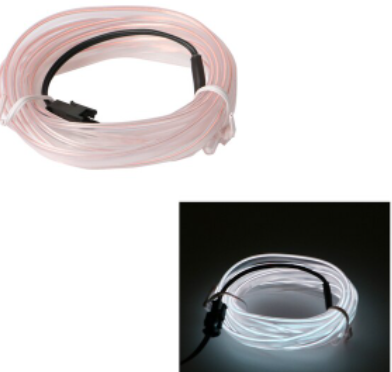A 28-year-old bodysurfer from Brazil, Lattanzi was treadingwater at Peahi, the renowned surf spot on the north shore of Maui that is knownto most as Jaws, waiting for a massive wall of water. When a 20-foot waveapproached, he kicked his fins and swam ferociously to catch it.
Without the support of a surfboard, Lattanzi tautened hisbody and extended his arms onto a handplane, a board about the size of aserving platter. Gliding through the tunnel created by the curling wave, hebecame one of the few bodysurfers to ride through the barrel of a big wave atJaws.
“Best barrel of my life,” Lattanzi said. In an Instagramstory, Kelly Slater, an 11-time World Surf League champion, anointed Lattanzi’sperformance “one of the all-time great rides in the surf world.”
It was the latest jaw-dropping feat Lattanzi added to hisresume. Since he burst onto the scene in 2015 by bodysurfing 30- to 40-footwaves off the coast of Nazaré, Portugal, the Mount Everest of wave riding,Lattanzi has tackled some of the biggest surf on the planet.
In the process, he has pushed the boundaries of big-wavebodysurfing, a niche discipline in which surfers catch and ride monster waveswith their bodies, a pair of swim fins and at times a handplane, a device thatcan make waves easier to ride (and one that some purists view as a crutch).
“It’s one of the most extreme things I’ve ever seen,” saidNic von Rupp, a professional big-wave surfer. “It’s so extreme it’s likehanging from the wing of an aeroplane while everyone is sitting inside.”
Bodysurfing is one of the most ancient forms of wave riding,one that has enjoyed a surge in competitions and participants in recent years.While there is no organised circuit of competition, in January, a nationalgoverning body was founded in the United States with the goal of getting thesport into the 2032 Summer Olympics in Brisbane, Australia.
The sport’s devotees call it one of the purest forms of anysort of wave riding. “It’s like every cell in your body is humming with theenergy of the ocean,” said Ryan Masters, a big-wave bodysurfer from Santa Cruz,California. “I believe it’s the closest you can get to really physicallyexperiencing the universe’s tangible energy, call that God or whatever.”
Catching a big wave requires bodysurfers to positionthemselves in the lineup as a surfer would, treading water until the right wavearrives. That can take a while: Lattanzi once treaded water for four hours tocatch three waves off Nazaré.
Once the right wave approaches, bodysurfers must generate asmuch speed as possible by swimming and kicking their fins, then they use theirarms, torso and legs to control direction and speed while inside the wave. Somebodysurfers like Mike Stewart, one of the few people to bodysurf a wave off thecoast of Teahupo’o, Tahiti — considered to be one of the world’s most lethal —looks to seals, dolphins and otters for how to best manoeuvre in the water.
Because bodysurfers ride headfirst into massive waves, itmay seem a more dangerous style than boardsurfing, especially so for noviceriders, who tend to catch waves in shallow water and might not know how toavoid head-planting when the wave breaks. Whereas boardsurfers are more likelyto receive lacerations from being hit by their boards, bodysurfers are morelikely to come into contact with the seafloor, which can cause devastatingcervical spine injuries, said Pascal Juang, an emergency room physician at HoagHospital in Newport Beach, California.
But some say that experienced big-wave bodysurfers mightactually be safer without a board. “It looks so much scarier, not having aboard, but if you’re a strong swimmer and have fins on and know the lineup andhave a high degree of big-wave knowledge, you’re better off than being on aboard with no fins,” said Matt Warshaw, author of “The Encyclopedia ofSurfing.”
Bobbing and diving through huge surf like a seal, Lattanziis remarkably at ease, which he credits to a lifetime spent in the water. Hegot his start bodysurfing at age 12 in Itacoatiara, Brazil, and had dreams ofcharging monster waves.
“When I started bodysurfing, I wondered if it was possiblefor someone to bodysurf a big wave,” he said. “Then I started to grow up and Irealised, ‘OK, I am the one who is going to do this.’”
By 2011, at 17 years old, he was bodysurfing in Arica,Chile, and Puerto Escondido, Mexico, a big-wave capital of the world. In 2015,he headed to Nazaré, where he spent the next six years catching some of thebiggest waves bodysurfed, some as high as 40 feet, a death-defying feat akin todiving off a four-story building. “He’s in a league of his own,” said MarkDrewelow, a competitive bodysurfer from Encinitas, California.
Lattanzi prepares like a professional athlete in order tomeet the demands of his niche. He eats clean and cross-trains, lifting weightsand doing yoga in order to sustain the many hours of swimming, negotiate hugewaves and withstand their impact. He now has his sights set on Mavericks, anotoriously dangerous wave in Northern California that can reach heights ofmore than 60 feet, which he hopes to tackle this year.
“It takes a real tranquil mind. It takes incrediblestrength. Incredible lungs. Aqua Gorilla is what we all call him because he’sso strong in the water,” Masters said. “He’s the ultimate waterman.”
When Masters tried to conquer Mavericks in 2016, he bruiseda lung, fractured his neck, broke his collarbone and seven ribs, and wasairlifted to Stanford Hospital. “Mavericks is just a different animal that’sunlike any wave on the planet,” Masters said. “It’s incredibly savage.”
Given the risks, some wonder why Lattanzi is willing topaddle out to the world’s most dangerous surf breaks. Even Mark Cunningham,widely considered the best bodysurfer of all time, has found himself wondering:“He’s swimming out in water I wouldn’t even consider. What’s driving him?”
For Lattanzi, it is simple.
“Because I love it,” he said. “I love the adrenaline. I lovethis feeling of being surrounded by water and finding the biggest barrels and pushingmy limits. I’m chasing adrenaline for sure.”
©2022 The New York Times Company




